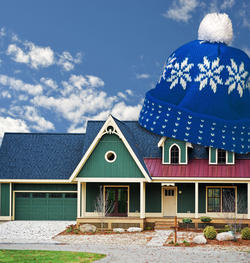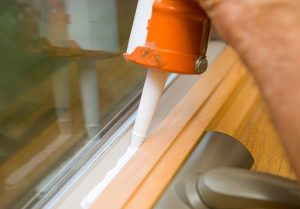How to seal your house this winter
 As winter rolls in, animals – humans included – will look for ways in which to keep themselves warm till the hotter months come around again.
As winter rolls in, animals – humans included – will look for ways in which to keep themselves warm till the hotter months come around again.
Humans, naturally, get into their houses and turn on the heating so that there is always a constant supply of heat, vital to survival. These houses, however, might not be fully sealed, allowing cold drafts to get in and the warm air to get out.
This puts a strain on your heating system to keep the warmth throughout the house even; a situation that will also dig further into your pocket.
When you want seal your house against the cold, here are a few areas that you should look into.
Frames of doors and windows
The areas around the doors and windows of the house usually have small gaps that let in the cold air and sap away your warmth. These gaps need to be sealed.
Remove the moldings around the windows and doors and apply foam. There is a special kind of foam for windows and doors that will not damage the frame when it expands as it sets. After applying the sealant, replace the moldings and apply an acrylic-latex caulk on the frame to makes sure that there are no air leaks.
If foam is not your kind of thing, there are different types of weather-stripping that you can use depending on the budget you are working with. You can also use a combination of caulk and weather-stripping.
Plumbing that goes through the wall
When pipes got through the wall to reach up to your sink, they leave space – however minute – between their surface and the wall. This space lets in cold air and will add a huge amount onto your energy bill.
Apart from disrupting the efficiency of your heater, this space can be a pathway for all kinds of insects and vermin retreating from the cold.
A foam sealant is very handy in such a case. Squirt the foam in the gap around the pipe and let it expand and set, sealing the area.
The basement
There are different places in the basement that are guilty of letting cold air into the house. You can seal your house by finding gaps along the sill plate, rim joists and the foundation. There might also be cracks on the walls and the floor. The pipes that feed water to your washing machine might leave gaps in the wall where they enter the basement.
All these need to be sealed to ensure that your home is efficiently heated in the winter. You can seal the small gaps with the earlier-mentioned caulk, utilizing foam sealant for the larger gaps ad cracks.
The attic
The attic, a place usually ignored by many, is one of the biggest culprits when it comes to letting cold air into the house. You should check to make sure that the gaps in the attic doors are sealed.
The weatherization work in the attic is a bit more complex and it is usually advisable to hire a professional to do this. This is because there might be electric wiring to work around, dangerous asbestos insulation in older houses or even fire hazards that might be unknown to you.
